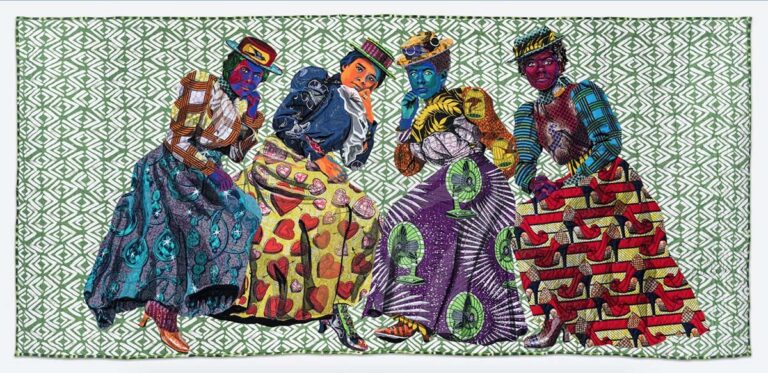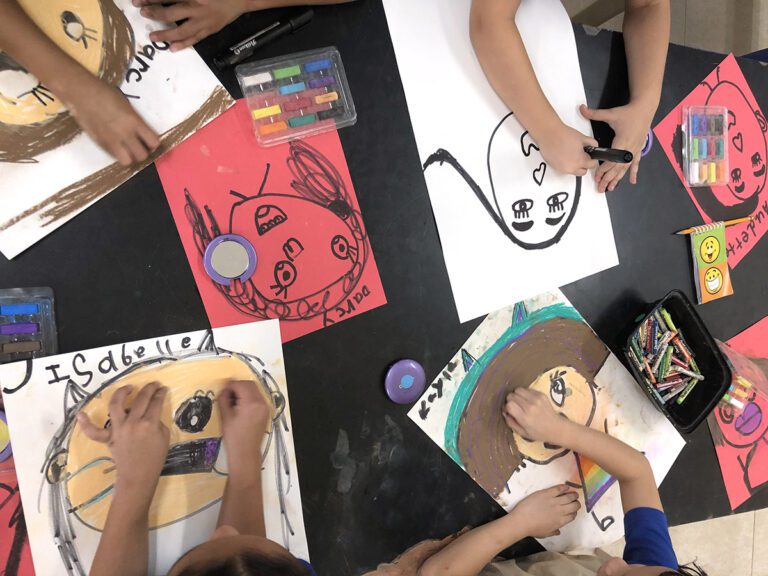As each of my classes come to an end at the quarter or semester mark, there are a few activities with which I like to close. Although the details of these activities do change depending on what age of students I am finishing up with, I find it beneficial to end with authentic reflection and growth documentation not only for the students but for myself as well. Here are 3 simple ideas to end your art classes succinctly but genuinely.
1. Reflection Survey
Near the last day of every quarter or semester, students complete an overall reflection survey of the course. Typically, I use Google Drive for this and I create a form for students (Google form tutorial here) to complete digitally on their iPads. Using Google allows me to quickly see responses from students in a spreadsheet form and allows me to immediately assess the overall consensus.

Below is a sampling of questions I include in my end-of-the-quarter surveys.
- What was your favorite/least favorite project this year? Why? List two reasons why my next group of students should do/should not do this project.
- Is there any type/kind of project we didn’t get to that you would’ve liked to try?
- What is one technique that you see yourself using again in future artwork? Why?
- How have you grown as a creative or critical thinker this quarter?
- On which project did you collaborate best with others? Why?
Some students struggle to remember all of the details of what we worked on throughout the quarter and consequently have a hard time reflecting authentically. Recently, I started using a working document in class to help with self-assessment, reflection and self-tracking of growth. I’ll be sharing all the details during my presentation at the 2015 AOE Online Winter Conference. Be sure to join me!
I love to read and consider the responses from my students’ surveys. Most students are very honest in their reflections and feedback, and I make adjustments to upcoming classes based on what they have to say.
2. What Is Art? Activity
Another activity I like students to participate in at the end of the quarter is something I call “What is Art?”. This activity is fun to try at both the beginning and end of a course to see how students’ thinking changes over time.

If you’d like to try “What is Art?” in your classroom, follow the steps below.
1. Start with a box of “stuff”. The items can be anything, but have a good assortment of commercially-made products, handmade crafts, art supplies, photos, tools, toys, etc.
2. Set out a large piece of paper labeled “art” in the middle of the classroom. Then, ask students to come up to the box of stuff and choose an item.
3. Once all students have chosen an item, explain that everyone will come back up and decide if his or her item should be placed on the paper labeled “art” or not. If you have a doc cam, project the paper square so students can see where items are being placed.
4. Ask for volunteers to explain why they chose to put their items either on the paper, off the paper…or the interesting choice of “on the edge”! This activity makes for some great conversations about what we personally accept as art and how that can differ from others’ opinions.
3. Cleaning Up
Typically on the last day of class, my middle schoolers spend 15-20 minutes helping clean up the art room. In the weeks leading up to that last day, I keep track of quick, student-friendly clean up jobs (washing brushes, organizing the scrap paper container, testing markers, etc). I enter the clean-up jobs into an app on my iPad call Roundom. Roundom lets students spin the electronic wheel labeled with the jobs and essentially “win” a clean-up. It’s little twist to make cleaning up more bearable.
These three activities will allow your students to reflect on the projects they’ve done, on how they’ve expanded their thinking about art, and on how they are an integral part of a busy art room. Not only that, but they will allow you to see just how far your students have come.
What are some ways you wrap up the end of your quarter or semester courses?
What activities help bring closure for you and your students?
Magazine articles and podcasts are opinions of professional education contributors and do not necessarily represent the position of the Art of Education University (AOEU) or its academic offerings. Contributors use terms in the way they are most often talked about in the scope of their educational experiences.




